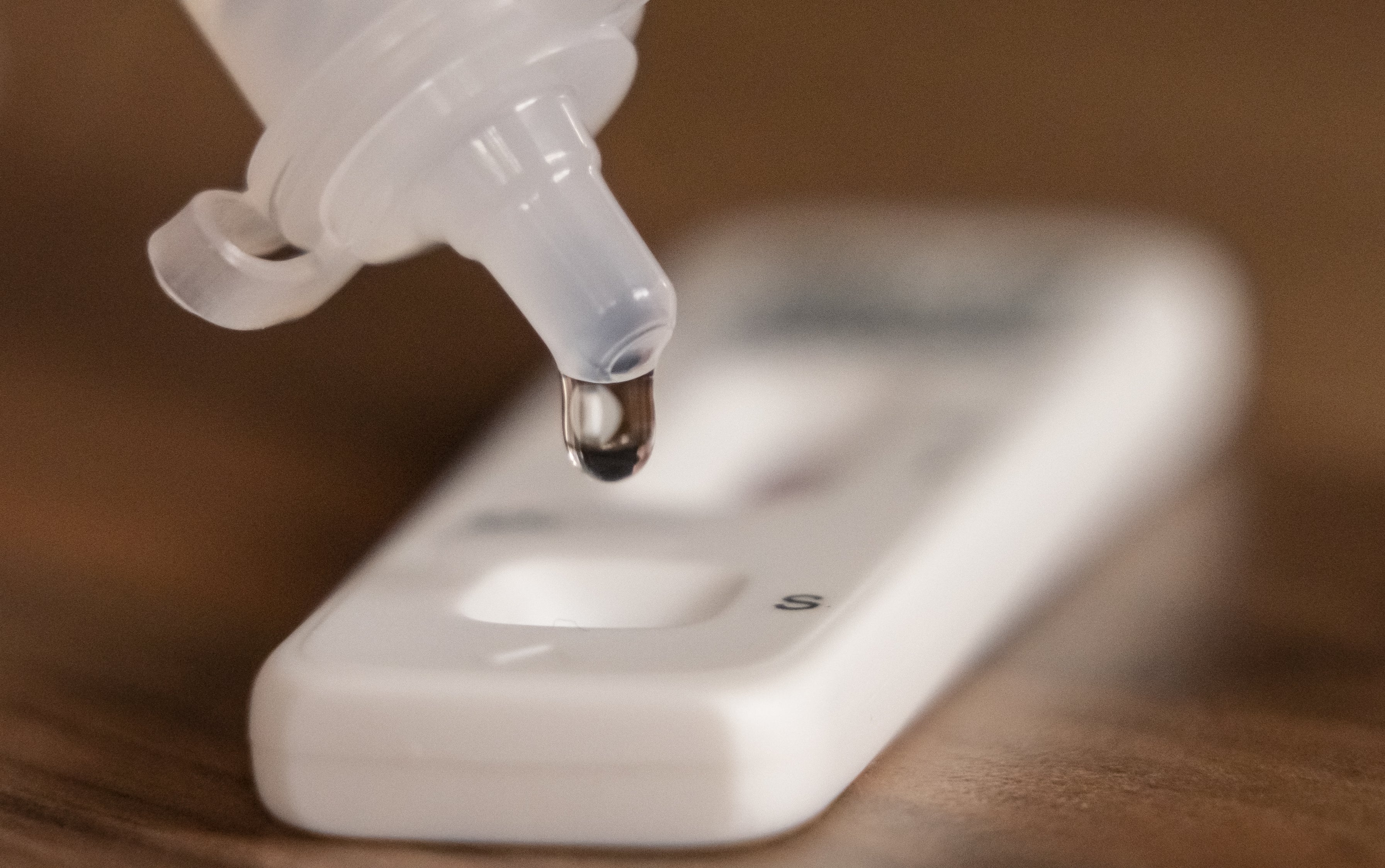‘Half a million’ new Covid-19 cases each day in UK over Christmas
High levels of under-reporting are likely to have affected the Government’s daily figures.

New cases of Covid-19 in the UK averaged nearly half a million a day during the week after Christmas, almost three times the official figures, new analysis suggests.
It comes as health agencies have urged caution about interpreting the regular case numbers published each day for the UK, following changes in rules about testing.
An average of 173,400 new cases of coronavirus per day were recorded from December 26 to January 1, according to the Government’s Covid-19 dashboard.
But the true number of cases was likely to be nearer 479,100 a day, according to estimates by the Office for National Statistics (ONS).
The sharp difference in totals reflects just how many new cases of Covid-19 are being missed in the dashboard figures, which count only those people who have reported themselves as having tested positive for the virus.
This means the numbers are affected by how many people are coming forward for tests, have chosen to report their test results, or who are taking a test because they know they have coronavirus symptoms.
By contrast, the ONS figures are based on analysis of nose and throat swabs taken from a representative sample of more than 150,000 people in private households.
The same people are sampled every week, regardless of whether they know they have Covid-19 or have reported a positive result.
The ONS then produces estimates of the likely number of new cases of coronavirus across the country.
The estimates for the week after Christmas have only now been published, due to the time needed to collect and process the data.
The number of new cases reported by the Government has always been lower than the level estimated by the ONS, but the gap has become wider since the arrival of the Omicron variant of the virus.
In the week to November 27, before Omicron had started to spread in the UK, the ONS estimated an average of 99,100 new cases a day – just over twice the average of 41,900 a day recorded on the dashboard.
The ONS estimates are now nearly three times the equivalent total on the dashboard.
High levels of under-reporting will still be affecting the Government’s daily figures, meaning the true volume of cases in the UK is increasingly unclear.
The recent change in the rules for testing, removing the the need for asymptomatic people to get a confirmatory PCR test after a positive lateral flow result, is also likely to affect the daily figures.
In its latest weekly Covid-19 surveillance report, the Health Security Agency said the removal of confirmatory PCR testing “may affect case rates” in England.
Public Health Wales has estimated that removing the follow-up test “is likely to reduce overall reported cases by at least 10%, based on analyses linking lateral flow tests to PCR positive episodes”.
The agency acknowledged that “changes in testing behaviour” may lead to under-reporting “should symptomatic new cases not test using PCR”.
In Scotland, health officials have recently widened their method of counting new cases to also include people who have recorded a first positive lateral flow test – though this change has yet to be reflected in the figures published on the UK Government dashboard.
The dashboard numbers are currently limited to all positive lab-confirmed PCR test results in the UK, plus positive lateral flow tests in Northern Ireland and, in England, any positive lateral flow tests not followed by a negative PCR test taken within 72 hours.
Bookmark popover
Removed from bookmarks